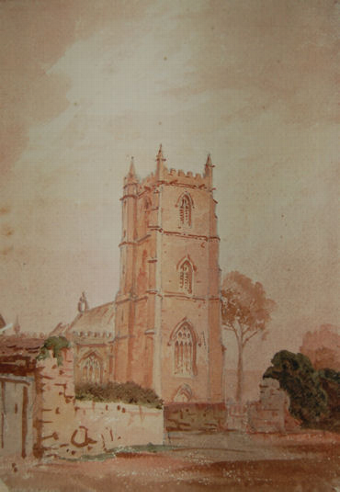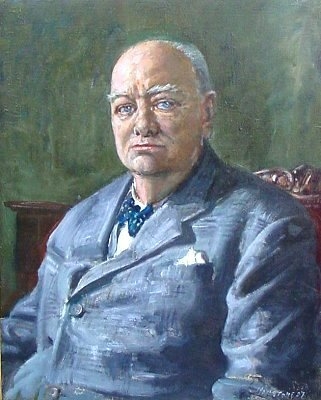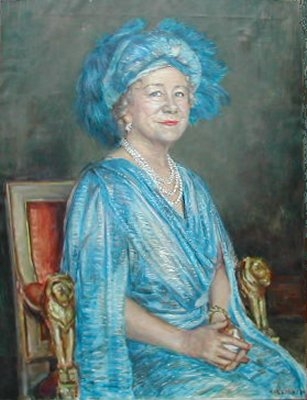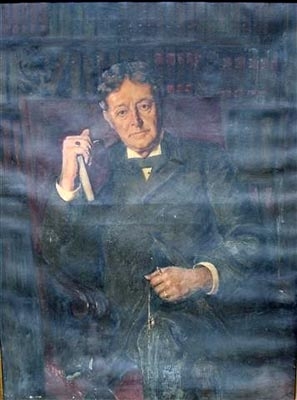featured item
litchfiled cathedral, staffordshire 2
- View other items in:
- antiques interior design modern and vintage
- other interior design
artware ltd
Enquire about this antique
Artware Ltd has 565 antiques for sale.
click here to see them all
inscribed on the reverse and dated "Lfd.. April 27 -1868"
Lichfield Cathedral is situated in Lichfield, Staffordshire, England. It is the only medieval English cathedral with three spires. The Diocese of Lichfield covers all of Staffordshire, much of Shropshire and part of the Black Country and West Midlands. When Chad was made Bishop of Mercia in 669 he moved his See from Repton to Lichfield, possibly because this was already a holy site, as the scene of martyrdoms during the Roman period. The first cathedral to be built on the present site was in 700AD when Bishop Hedda built a new church to house the bones of St Chad which had become a sacred shrine to many pilgrims when he died in 672. Offa, King of Mercia seemed to resent his own bishops paying allegiance to the Archbishop of Canterbury in Kent who, whilst under Offa''s control, was not of his own kingdom of Mercia. Offa therefore created his own archbishopric in Lichfield, who presided over all the bishops from the Humber to the Thames. All this began in 786, with the consent of Pope Adrian. The Pope?s official representatives were received warmly by Offa and were present at the Council of Chelsea (787), often called `the contentious synod'', where it was proposed that the Archbishopric of Canterbury be restricted in order to make way for Offa''s new archbishop. It was vehemently opposed, but Offa and the papal representatives defeated Archbishop Jaenbert, installing Higbert as the new Archbishop of Lichfield. Pope Adrian sent Higbert the pallium, denoting his support for this move. In gratitude, Offa promised to send an annual shipment of gold to the pope for alms and supplying the lights in St. Peter''s church in Rome. However, The Archbishopric of Lichfield only lasted for 16 years, ending soon after Offa''s death, when it was restored to Archbishop Aethelheard of Canterbury.
Starting in 1085 and continuing through the twelfth century the original wooden Saxon church was replaced by a Norman cathedral made from stone, and this was in turn replaced by the present Gothic cathedral begun in 1195. It was completed by the building of the Lady Chapel in the 1330s. The Choir dates from 1200, the Transepts from 1220 to 1240 and the Nave was started in 1260. The octagonal Chapter House, which was completed in 1249 and is one of the most beautiful parts of the Cathedral with some charming stone carvings, houses an exhibition of the cathedral''s greatest treasure, the Lichfield Gospels, an 8th century illuminated manuscript. There were three great sieges of Lichfield during the period 1643?1646 as the cathedral was surrounded by a ditch and defensive walls it made a natural fortress. The cathedral authorities with a certain following were for the king, but the townsfolk generally sided with the parliament, and this led to the fortification of the close in 1643. Robert Greville, 2nd Baron Brooke, led an assault against it, but was killed by a deflected bullet from John Dyott (known as ''dumb'' because he was a deaf mute) who along with his brother Richard Dyott had taken up a position on the battlements of the central cathedral spire on 2 March 1643. Brooke''s deputy Sir John Gell, took over the siege. Although the Royalist garrison surrendered to Gell two days later, the close yielded and was retaken by Prince Rupert of the Rhine on 20 April of the same year. Rupert''s engineers detonated the first mine to be used in England[citation needed] to breach the defences. Unable to defend the breach, the parliamentarians surrendered to Rupert the following day. The cathedral suffered extensive damage: the central spire was demolished, the roofs ruined and all the stained glass smashed. Bishop Hacket began the restoration of the cathedral in the 1660s, aided by substantial funds donated by the restored monarch, but it was not until the 19th century that the damage caused by the Civil War was fully repaired. Up until the 19th century, on top of an ornamented gable, between the two spires, stood a colossal figure of Charles II, by Sir William Wilson. Today it stands just outside the south doors.
Although the 18th century was a golden age for the City of Lichfield, it was a period of decay for the cathedral. The 15th-century library, on the north side of the nave, was pulled down and the books moved to their present location above the Chapter House. Most of the statues on the west front were removed and the stonework covered with Roman cement. At the end of the century James Wyatt organised some major structural work, removing the High Altar to make one worship area of Choir and Lady Chapel and adding a massive stone screen at the entrance to the Choir. The ornate west front was extensively renovated in the Victorian era by Sir George Gilbert Scott. It includes a remarkable number of ornate carved figures of kings, queens and saints, working with original materials where possible and creating fine new imitations and additions when the originals were not available. Wyatt''s choir-screen had utilised medieval stone-work which Scott in turn used to create the clergy''s seats in the sanctuary. The new metal screen by Francis Skidmore and John Birnie Philip to designs by Scott himself is a triumph of High Victorian art, as are the fine Minton tiles in the choir, inspired by the medieval ones found in the Choir foundations and still seen in the Library.
Antiques.co.uk Ref: FUX5XW54
- Materials:
- Pencil and Watercolour
- Width (cm):
- 27.60 x 39.00 cm 10.87 x 15.35 ins
Artware Ltd
Artware Fine Art specialises in fine antique, decorative and historical portraits and topographical pictures . We cover a period from the 17th and 18th centuries through to the 19th & 20th Centuries. We have over 150 portraits in stock, which can be viewed on our web site, each historical portrait has well researched biographical information both on the sitter and the artist.
Contact details
18 La gare
51 Surrey row
London
Greater London
SE1 0BZ
UNITED KINGDOM
T: 0207 921 97904
E: greg@artwarefineart.com
W: www.artwarefineart.com












